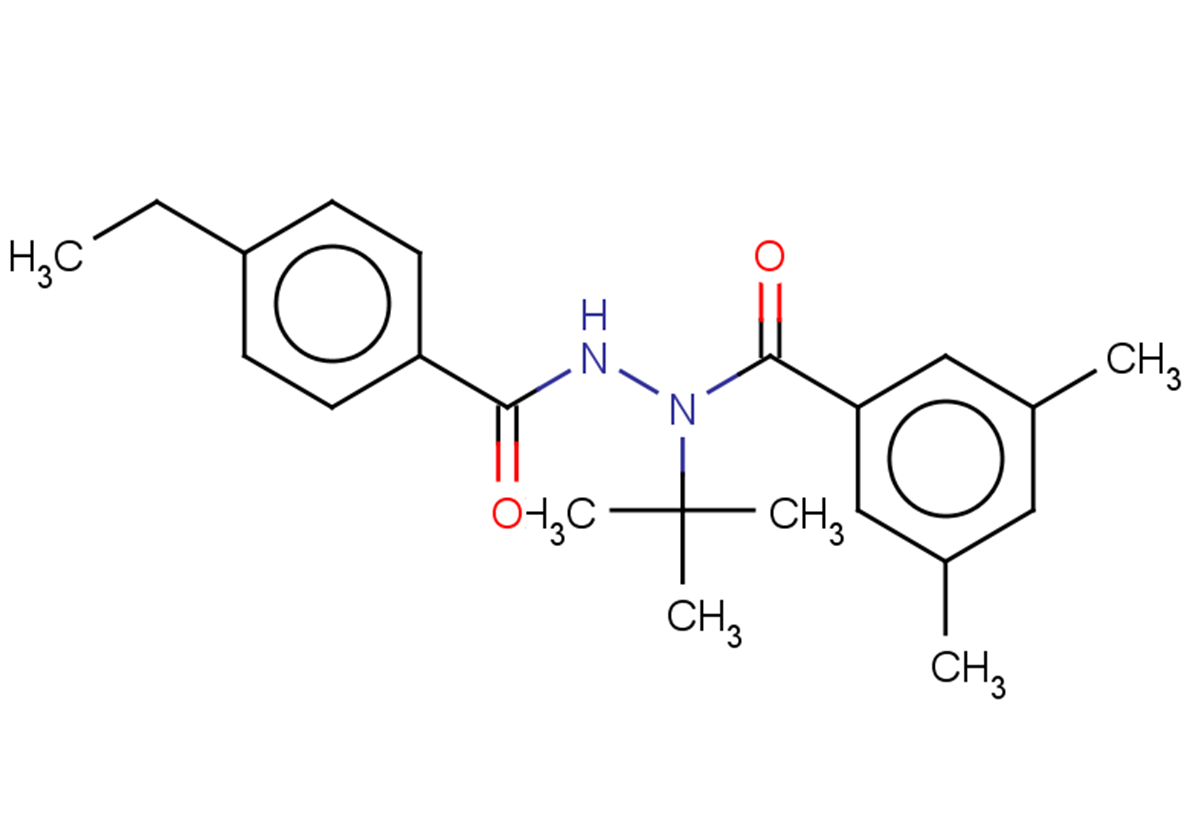
Tebufenozide
CAS No. 112410-23-8
Tebufenozide( —— )
Catalog No. M23317 CAS No. 112410-23-8
Tebufenozide is a novel nonsteroidal ecdysone agonist.
Purity : >98% (HPLC)
 COA
COA
 Datasheet
Datasheet
 HNMR
HNMR
 HPLC
HPLC
 MSDS
MSDS
 Handing Instructions
Handing Instructions
| Size | Price / USD | Stock | Quantity |
| 25MG | 35 | In Stock |


|
| 50MG | 58 | In Stock |


|
| 100MG | 87 | In Stock |


|
| 200MG | 129 | In Stock |


|
| 500MG | 214 | In Stock |


|
| 1G | Get Quote | In Stock |


|
Biological Information
-
Product NameTebufenozide
-
NoteResearch use only, not for human use.
-
Brief DescriptionTebufenozide is a novel nonsteroidal ecdysone agonist.
-
DescriptionTebufenozide is a novel nonsteroidal ecdysone agonist. It shows good efficacy and playing an increasingly important role in the control of Lepidopteran pests.
-
In Vitro——
-
In Vivo——
-
Synonyms——
-
PathwayApoptosis
-
TargetApoptosis
-
RecptorApoptosis
-
Research Area——
-
Indication——
Chemical Information
-
CAS Number112410-23-8
-
Formula Weight352.48
-
Molecular FormulaC22H28N2O2
-
Purity>98% (HPLC)
-
SolubilityDMSO:125 mg/mL (354.64 mM; Need ultrasonic)
-
SMILESCCc(cc1)ccc1C(NN(C(C)(C)C)C(c1cc(C)cc(C)c1)=O)=O
-
Chemical Name——
Shipping & Storage Information
-
Storage(-20℃)
-
ShippingWith Ice Pack
-
Stability≥ 2 years
Reference
1.Yun-Sik L , Sung-Eun L , Jino S , et al. Toxicity effects and biomarkers of tebufenozide exposure in Yuukianura szeptyckii (Collembola: Neanuridae)[J]. Environmental Geochemistry & Health, 2018:1-12.
molnova catalog



related products
-
BTZO-1
BTZO-1 is an antioxidant response element (ARE) activator with cardioprotective activity.
-
Complanatoside
Complanatuside is a flavonoid found in the traditional Chinese medicine Semen Astragali Complanati.
-
JPH203
JPH203 (KYT-0353)?is a potent, selective L-type amino acid transporter 1 (LAT1, SLC7A5) inhibitor with IC50 of 60 nM (leucine uptake inhibition).



 Cart
Cart
 sales@molnova.com
sales@molnova.com


